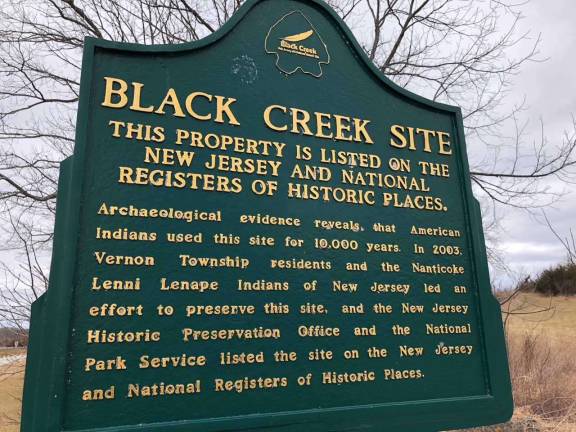A not so empty field

A road isn’t typically an interesting place. But a trip down Maple Grange Road in Vernon offers a compacted, telescopic experience in history, culture and commerce. It starts on Route 94, that old Native American trail. Soon to appear are railroad tracks, the snaky Black Creek and remnants of the Maple Grange Farm. Cut out of that are homestead businesses, a few specialized technical companies and a septic service, with its fleet of honey dipper trucks. Before Maple Grange ends on Glenwood Road, there’s a sprawling sports and recreation complex. This all sounds pretty regular, you say?
Well, on the left as you enter the recreation area is the fabled Black Creek Site, a hard-won State and Federal protected 40 acres of what was once a meeting ground for Native Americans from all over the Northeast and beyond. There are no bases, goals, team benches or bleachers. It is a four-acre empty field – near empty. There are a few sign markers and a modest shelter for educational programs.
Since it was rescued from being just another part of a multimillion-dollar town sports facility in 2002, it has become sacred ground, almost a shrine, for Native Americans all over the country. Six thousand artifacts spanning an 8,000-year period have been found there, from very early points and pottery to colonial-era Dutch trading beads.
Again, it is empty. It is a Place to visit, wander, ponder the lingering of the past.
If you need a more vigorous reminder of pre-colonial life, very nearby, on the Appalachian Trail, is the Ring Quarry, an early Native American mining area, a collection of tall boulders, veined with black chert used for making arrow and spear points. The Vernon Historical Society has information online.
This dense mix of the historical, industrial, recreational and pre-historic provokes very urgent current questions of land use: What is the value of an empty field? Many local people still think it should have been an active part of the recreation complex, arguing that it was “for the children.” Go visit, see what you think.
Daniel Mack